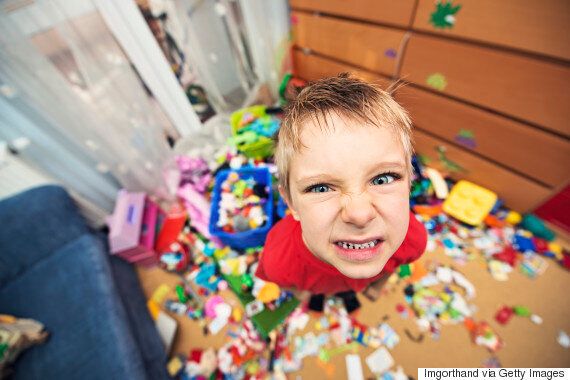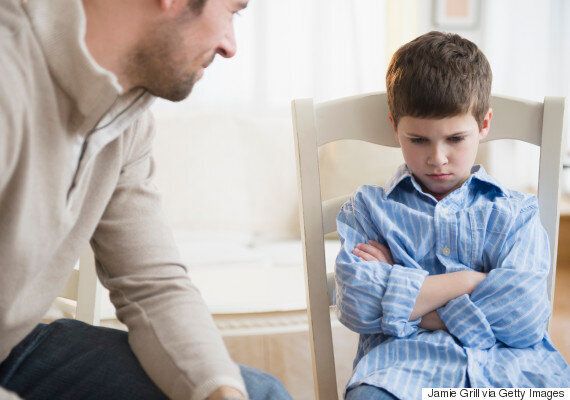We’ve all experienced our kids losing their cool. After all, what three-year-old doesn’t get upset when they drop their ice-cream cone on the sidewalk? But what if those tears of disappointment turn into rage? Does your child yell and kick you? What is normal anger and when is it an emotional regulation problem? What if these outbursts don’t end when your child is three years old but continue on when they are six, seven, or eight?
Of utmost importance is for parents not be intimidated by these angry outbursts, nor give in to the demands of the child as an easy way of de-escalating the situation. Neither should we shame or belittle them for how they are feeling. These outbursts can leave a child feeling scared, remorseful and badly about themselves.

Sometimes spotting aggression in a child isn't as easy as catching them screaming or throwing a tantrum. While most children have got a handle on their emotions by the time they are school-aged, some children need earlier interventions and additional help from professionals. Speak to your family doctor if you are experiencing any of the following:
- Your child is unhappy, anxious or angry most of the time
- Your child’s moods and behaviours are interfering with friendships or family functioning
- You feel yourself pulling away emotionally from your child
- The school is voicing concerns
- You can’t keep babysitters, or you refuse to leave your child with anyone for fear of an outburst
- Your child is self-harming
- Your child is physically harming others
- Your gut says something is just not right
We have to remember that anger serves a very important role in human survival and advancement, so don’t wish it all away. Instead, help your child manage how they direct their angry emotions so that it leads to more positive outcomes. Here is some in-the-moment advice to responding to an angry child:
1. It's All About Prevention
Kids are better able to handle their emotions and roll with the punches when they are well-rested, well-fed and their nervous system is calm and regulated. Instill good sleep routines, have regular healthy meals and snacks with proteins, avoid sugar and caffeine, and don’t get your child too wound up. Be sure to find calming activities throughout the day.

2. Stay Calm And Loving
If you want to help your child get calm, you have to be calm yourself. Think of a flight attendant during turbulence: If they are calm, you expect all is OK with the plane, but if the flight attendant looks scared and panicked, you become frightened too. Your parental calmness is infectious, so your body language should be welcoming and soft; perhaps you speak quietly and rub their back or get them their favourite stuffed animal. Experiment with ideas that help your child regain calm. Some kids respond to distraction, while others want cuddles. Being kind and loving is not re-enforcing bad behaviour.
3. Listening – Not Lecturing
When children are in an angry state they can’t be reasoned with, so don’t try to lecture them on why they shouldn’t be mad. Instead, try helping them make sense of their feelings and show you understand how they are feeling by using reflexive listening. This style of listening requires you to say in words what the child is experiencing and to name their feelings.
Instead of saying something like, “It’s just an ice-cream cone for crying out loud. You’d think I cut your arm off with the way you are carrying on," which is antagonizing, try, “Oh no! You were looking forward to that ice cream all day long and when you finally got it, it dropped out of your hand for no fault of your own." This makes the child feel that you are sharing their experience and that they are not alone.

4. Move You – Not Them
If you try to put an upset child in a time-out in their room, things usually go from bad to worse. Instead, if your child gets physical with you, it’s recommended you act in a self-respecting way by getting yourself to safety. Go to a washroom or your bedroom and let them know you do not allow people to hit or kick you and that you need to feel safe in your home. Assure them you will join them again when they are calm. Give them a chance to prove they can be upset without being physical and return shortly.
5. Remove The Audience
If your child is raging in a classroom or public place, do your best to get away from the onlookers. These events can be very embarrassing for the child and can upset others. It’s easier to regain composure in private.

6. Promise To Solve The Problem When Calm
Nothing can be solved when we are hijacked emotionally, however, it can be comforting to say, “I see you are very upset about this. I want to help make things right. When you are calm we can discuss this together.” Help the child find alternative solutions to their problem.
7. Move Forward
When they are calm and the problem is solved, leave the past behind. Don’t bring up the incident again and don’t hold a grudge against your child. It can feel hopeless to shake off a reputation once you’ve established one. If we want children to change we have to change our expectations of them first.
Also on HuffPost
